Themed collection 2020 Catalysis Science & Technology Hot Articles

The elusive photocatalytic water splitting reaction using sunlight on suspended nanoparticles: is there a way forward?
For many decades hydrogen production from water by photocatalytic methods has been pursued over a variety of semiconductor powder catalysts featuring many structures and compositions. The stoichiometric formation of molecular hydrogen and oxygen has stayed largely elusive.
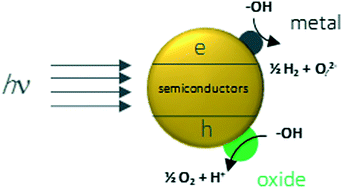
Catal. Sci. Technol., 2020,10, 304-310
https://doi.org/10.1039/C9CY01818B
Catalysis, kinetics and mechanisms of organo-iridium enantioselective hydrogenation-reduction
The synthesis of chiral molecules is of great importance to the pharmaceutical, agrochemical, flavour and fragrance industries.

Catal. Sci. Technol., 2020,10, 590-612
https://doi.org/10.1039/C9CY02147G
Design and engineering of whole-cell biocatalytic cascades for the valorization of fatty acids
This review presents the key factors to construct a productive whole-cell biocatalytic cascade exemplified for the biotransformation of renewable fatty acids.
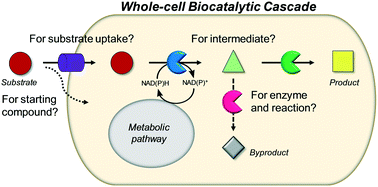
Catal. Sci. Technol., 2020,10, 46-64
https://doi.org/10.1039/C9CY01802F
Reductant composition influences the coordination of atomically dispersed Rh on anatase TiO2
Distinct local environments for atomically dispersed Rh species on anatase TiO2 result from reduction treatments under CO and H2.
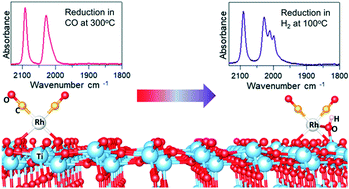
Catal. Sci. Technol., 2020,10, 1597-1601
https://doi.org/10.1039/D0CY00146E
High-temperature heterogeneous catalysis in platinum nanoparticle – molten salt suspensions
Suspensions of platinum nanoparticles (PtNPs) were formed in molten LiCl–LiBr–KBr via thermal decomposition of H2PtCl6, and subsequently evaluated for thermal stability and CO oxidation activity.
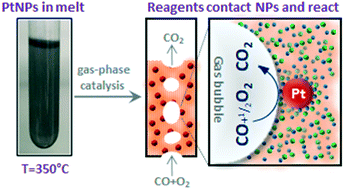
Catal. Sci. Technol., 2020,10, 625-629
https://doi.org/10.1039/C9CY01823A
One-pot synthesis of bimetallic metal–organic frameworks (MOFs) as acid–base bifunctional catalysts for tandem reaction
Bimetallic MIL-101(Al/Fe)–NH2 exhibits enhanced acid–base bifunctional catalytic activity due to its synergistic mechanism and hierarchical pore system.
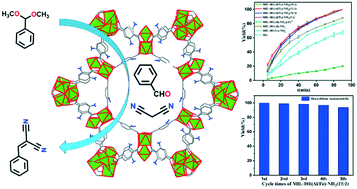
Catal. Sci. Technol., 2020,10, 315-322
https://doi.org/10.1039/C9CY01940E
Influence of intimacy for metal-mesoporous solid acids catalysts for n-alkanes hydro-conversion
Pt on both ordered mesoporous Al-SBA-15 and commercial amorphous mesoporous silica–alumina bi-functional catalysts were prepared and studied for n-heptane hydro-isomerization and n-hexadecane hydro-cracking.

Catal. Sci. Technol., 2020,10, 2111-2119
https://doi.org/10.1039/C9CY02510C
Prediction of optimal catalysts for a given chemical reaction
We show that the optimal catalyst for a given reaction equalizes the free energies of intermediates in an adsorbed phase, and in consequence is described by a surface energy proportional to the enthalpy of this reaction.
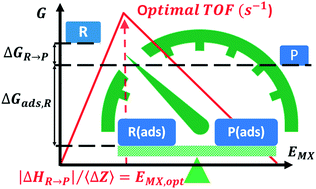
Catal. Sci. Technol., 2020,10, 2069-2081
https://doi.org/10.1039/C9CY02196E
Colloidal bimetallic platinum–ruthenium nanoparticles in ordered mesoporous carbon films as highly active electrocatalysts for the hydrogen evolution reaction
Ordered mesoporous carbon films with high surface area, good electrical conductivity and an improved distribution of NPs with tunable composition show high electrocatalytic activity in HER.
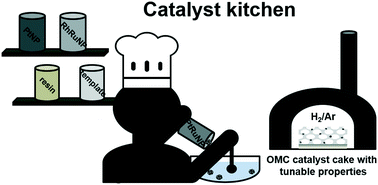
Catal. Sci. Technol., 2020,10, 2057-2068
https://doi.org/10.1039/C9CY02285F
Enhancement in the rate of nitrate degradation on Au- and Ag-decorated TiO2 photocatalysts
The solar-driven reduction of nitrate to nitrogen has been studied in the presence of a formate hole scavenger, over a series of Au- and Ag-decorated TiO2 catalysts.

Catal. Sci. Technol., 2020,10, 2082-2091
https://doi.org/10.1039/C9CY02473E
Number and intrinsic activity of cobalt surface sites in platinum promoted zeolite catalysts for carbon monoxide hydrogenation
A larger number and a more uniform distribution of cobalt sites with almost the same intrinsic activity results in higher carbon monoxide hydrogenation rate in the mordenite compared to ZSM-5 zeolite.
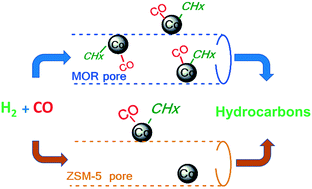
Catal. Sci. Technol., 2020,10, 2137-2144
https://doi.org/10.1039/C9CY02421B
Lean NOx reduction by CO at low temperature over bimetallic IrRu/Al2O3 catalysts with different Ir : Ru ratios
Lean NO reduction by CO at low temperature.
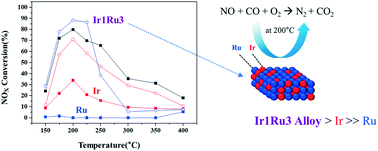
Catal. Sci. Technol., 2020,10, 2120-2136
https://doi.org/10.1039/C9CY02289A
Electronic effects of transition metal dopants on Fe(100) and Fe5C2(100) surfaces for CO activation
Spin polarized density functional theory computations were performed to elucidate electronic effects based on first-row transition metal doped Fe(100) and Fe5C2(100) surfaces for CO dissociation.

Catal. Sci. Technol., 2020,10, 2047-2056
https://doi.org/10.1039/C9CY02428J
A PMMA-based heterogeneous photocatalyst for visible light-promoted [4 + 2] cycloaddition
Macromolecular organic photocatalysts consisting of a PMMA network with integrated conjugated moiety have broad and promising applications in visible light-promoted photoredox catalysis.
![Graphical abstract: A PMMA-based heterogeneous photocatalyst for visible light-promoted [4 + 2] cycloaddition](/en/Image/Get?imageInfo.ImageType=GA&imageInfo.ImageIdentifier.ManuscriptID=D0CY00016G&imageInfo.ImageIdentifier.Year=2020)
Catal. Sci. Technol., 2020,10, 2092-2099
https://doi.org/10.1039/D0CY00016G
Revealing the unexpected promotion effect of diverse potassium precursors on α-MnO2 for the catalytic destruction of toluene
The alkali metal potassium has the functions of structure promotion and electronic modulation in metal oxides.

Catal. Sci. Technol., 2020,10, 2100-2110
https://doi.org/10.1039/C9CY02347J
Self-assembled CoTiO3 nanorods with controllable oxygen vacancies for the efficient photochemical reduction of CO2 to CO
CoTiO3 with oxygen vacancies was used as a cocatalyst for the photochemical reduction of CO2 to CO. The bond length of the double bond between C and O in CO2 increases from 1.17 Å to 1.25 Å in the activation step.
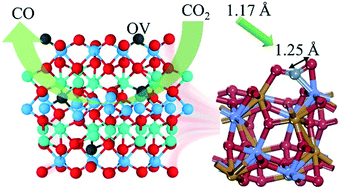
Catal. Sci. Technol., 2020,10, 2040-2046
https://doi.org/10.1039/C9CY02202C
A mechanistic study of microstructure modulation in olefin polymerizations using a redox-active Ni(II) α-diimine catalyst
Density functional theory and experimental evidence provide insight into the mechanism of polyolefin microstructure modulation using redox-active Ni(II) α-diimine catalysts.

Catal. Sci. Technol., 2020,10, 2029-2039
https://doi.org/10.1039/C9CY02538C
Piperazine-promoted gold-catalyzed hydrogenation: the influence of capping ligands
The presence of capping ligands can block the adsorption of the amine ligand on gold NPs, preventing the formation of a ligand–metal interface able to activate H2 for selective hydrogenation reactions.
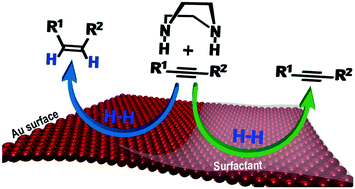
Catal. Sci. Technol., 2020,10, 1996-2003
https://doi.org/10.1039/C9CY02016K
Mechanism and malleability of glucose dehydration to HMF: entry points and water-induced diversions
A water-enabled reaction to a polyester building block is found to widely occur in the conversion of glucose to HMF.
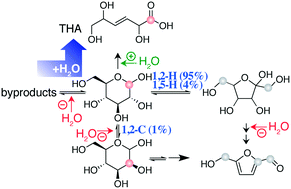
Catal. Sci. Technol., 2020,10, 1724-1730
https://doi.org/10.1039/C9CY02567G
Enhanced electron transfer and photocatalytic hydrogen production over the carbon nitride/porphyrin nanohybrid finely bridged by special copper
A graphitic carbon nitride/tetrakis-(4-hydroxyphenyl)porphyrin nanohybrid smartly fabricated with special Cu showed excellent photocatalytic hydrogen evolution performance.
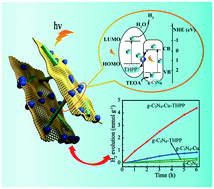
Catal. Sci. Technol., 2020,10, 1640-1649
https://doi.org/10.1039/C9CY02272D
Lewis acid sites in MOFs supports promoting the catalytic activity and selectivity for CO esterification to dimethyl carbonate
We studied the effect of Lewis acidity in metal–organic frameworks (MOFs) on their activity as catalyst supports for the esterification of CO to dimethyl carbonate.
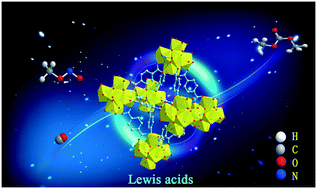
Catal. Sci. Technol., 2020,10, 1699-1707
https://doi.org/10.1039/C9CY02330E
NH3-Plasma pre-treated carbon supported active iron–nitrogen catalyst for oxygen reduction in acid and alkaline electrolytes
A new strategy in the synthesis of M–N–C type catalysts was introduced through the combination of plasma pre-treatment followed by conventional pyrolysis, which demonstrated higher ORR activity and stability than pristine M–N–C catalysts.

Catal. Sci. Technol., 2020,10, 1675-1687
https://doi.org/10.1039/C9CY02545F
Tunable surface modification of a hematite photoanode by a Co(salen)-based cocatalyst for boosting photoelectrochemical performance
A water splitting photoanode composed of hematite (α-Fe2O3) nanorods modified with Co(salen) was proven to exhibit special photoelectrochemical oxygen evolution activity.
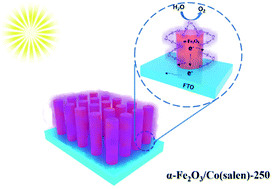
Catal. Sci. Technol., 2020,10, 1714-1723
https://doi.org/10.1039/C9CY02481F
Amorphous nickel–iron hydroxide films on nickel sulfide nanoparticles for the oxygen evolution reaction
The development of earth-abundant and low-cost electrocatalysts with high performance toward the oxygen evolution reaction (OER) plays a key role in water splitting.
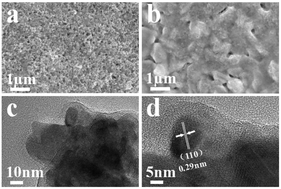
Catal. Sci. Technol., 2020,10, 1708-1713
https://doi.org/10.1039/C9CY02345C
Interfacial structure-governed SO2 resistance of Cu/TiO2 catalysts in the catalytic oxidation of CO
Different types of Cu–Ti interfacial structures determine different tolerance abilities of catalysts towards SO2 poisoning during CO oxidation at 250 °C.
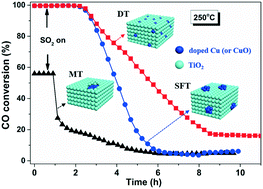
Catal. Sci. Technol., 2020,10, 1661-1674
https://doi.org/10.1039/C9CY02405K
Use of titanocalix[4]arenes in the ring opening polymerization of cyclic esters
Titanocalix[4]arenes are shown to be active for the ROP of cyclic esters under N2 or air with the mono-methoxy complex [Ti(NCMe)Cl(p-tert-butylcalix[4]arene(O)3(OMe))] performing best.
![Graphical abstract: Use of titanocalix[4]arenes in the ring opening polymerization of cyclic esters](/en/Image/Get?imageInfo.ImageType=GA&imageInfo.ImageIdentifier.ManuscriptID=C9CY02571E&imageInfo.ImageIdentifier.Year=2020)
Catal. Sci. Technol., 2020,10, 1619-1639
https://doi.org/10.1039/C9CY02571E
Micro-kinetic modelling of photocatalytic CO2 reduction over undoped and N-doped TiO2
The experimental data of photoreduction of CO2 using undoped and N-doped TiO2 photocatalysts were used for micro-kinetic modelling.
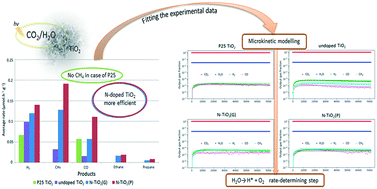
Catal. Sci. Technol., 2020,10, 1688-1698
https://doi.org/10.1039/C9CY02443C
Engineering an alcohol dehydrogenase with enhanced activity and stereoselectivity toward diaryl ketones: reduction of steric hindrance and change of the stereocontrol element
Engineering an alcohol dehydrogenase with enhanced activity and stereoselectivity toward diaryl ketones: reduction of steric hindrance and change of the stereocontrol element.

Catal. Sci. Technol., 2020,10, 1650-1660
https://doi.org/10.1039/C9CY02444A
Titanium-based phenoxy-imine catalyst for selective ethylene trimerization: effect of temperature on the activity, selectivity and properties of polymeric side products
A thermal switch of selectivity for a phenoxy-imine titanium catalyst was studied by combining kinetic studies and a “polymer-to-catalyst” approach.

Catal. Sci. Technol., 2020,10, 1602-1608
https://doi.org/10.1039/C9CY02056J
Regioselective C–H hydroxylation of n-alkanes using Shilov-type Pt catalysis in perfluorinated micro-emulsions
In this work, the potential of combining Shilov-type PtII and micellar catalysis to realize the challenging terminal C–H hydroxylation of saturated n-alkanes using water as the reaction medium is demonstrated.
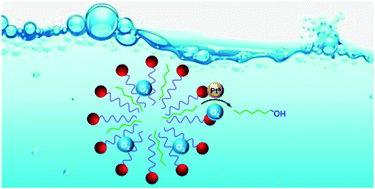
Catal. Sci. Technol., 2020,10, 1264-1272
https://doi.org/10.1039/C9CY02320H
Synergy effect between photocatalysis and heterogeneous photo-Fenton catalysis on Ti-doped LaFeO3 perovskite for high efficiency light-assisted water treatment
Synergy effect between photocatalysis and H2O2-mediated heterogeneous photo-Fenton catalysis on highly robust Ti-substituted La1−xTixFeO3 perovskites led to high performances under UV-A light in water treatment.
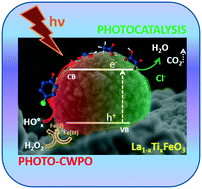
Catal. Sci. Technol., 2020,10, 1299-1310
https://doi.org/10.1039/C9CY02269D
Glass wool supported ruthenium complexes: versatile, recyclable heterogeneous photoredox catalysts
Versatile and recyclable heterogeneous photocatalysts based on the use of glass wool supported ruthenium complexes and organic dyes.
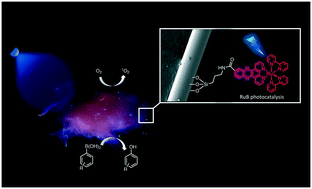
Catal. Sci. Technol., 2020,10, 1273-1280
https://doi.org/10.1039/C9CY02479D
Embedding oxygen vacancies at SnO2–CNT surfaces via a microwave polyol strategy towards effective electrocatalytic reduction of carbon-dioxide to formate
A facile and scalable microwave-polyol method has been utilised to introduce vacancies onto SnO2–CNT surfaces which significantly brings down the overpotential to around 150 mV during the electrochemical reduction of CO2.
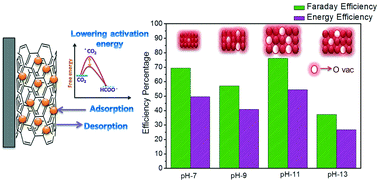
Catal. Sci. Technol., 2020,10, 1311-1322
https://doi.org/10.1039/C9CY01960J
Fabrication of a core–shell MFI@TON material and its enhanced catalytic performance for toluene alkylation
Core–shell MFI@TON composites were designed and synthesized as a highly shape-selective catalyst for toluene alkylation by passivating the nonselective acid sites and tuning the diffusion behavior.
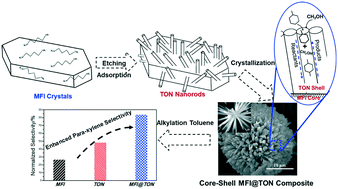
Catal. Sci. Technol., 2020,10, 1281-1291
https://doi.org/10.1039/C9CY02133G
Hierarchical FeCo2S4@CoFe layered double hydroxide on Ni foam as a bifunctional electrocatalyst for overall water splitting
Designing high-efficiency and low-cost bifunctional electrocatalysts for both the hydrogen evolution reaction (HER) and oxygen evolution reaction (OER) is of great significance to produce hydrogen by water electrolysis.
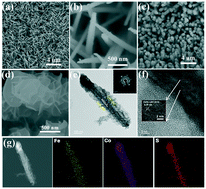
Catal. Sci. Technol., 2020,10, 1292-1298
https://doi.org/10.1039/C9CY01896D
Preventing Pd–NHC bond cleavage and switching from nano-scale to molecular catalytic systems: amines and temperature as catalyst activators
Heating Pd/NHC complexes with aliphatic amines induces Pd–NHC bond cleavage, while treating the complexes with primary or secondary aliphatic amines in the presence of strong bases promotes the activation of molecular Pd/NHC catalysis.
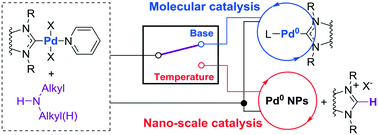
Catal. Sci. Technol., 2020,10, 1228-1247
https://doi.org/10.1039/C9CY02041A
Effects of phosphorus addition on selectivity and stability of Pd model catalysts during cyclohexene dehydrogenation
P addition to Pd increases dehydrogenation selectivity and increases catalyst stability.
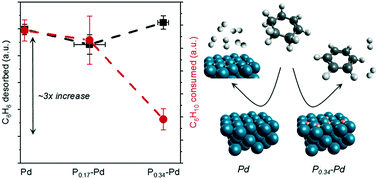
Catal. Sci. Technol., 2020,10, 993-1005
https://doi.org/10.1039/C9CY02134E
Mononuclear Fe in N-doped carbon: computational elucidation of active sites for electrochemical oxygen reduction and oxygen evolution reactions
First principles simulations show that in Fe and N co-doped carbon, Fe coordination controls the activity for oxygen reduction and oxygen evolution reactions, and that including the electrostatic potential has a major influence at high potential.
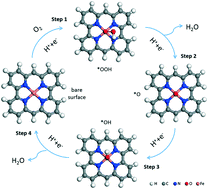
Catal. Sci. Technol., 2020,10, 1006-1014
https://doi.org/10.1039/C9CY01935A
The influence of inorganic anions on photocatalytic CO2 reduction
The influence of common inorganic anions on photocatalytic CO2 reduction has been investigated in a semiconductor/complex (CdS/Co(bpy)3Cl2) system.
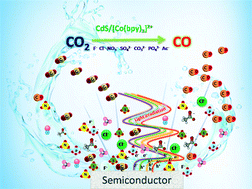
Catal. Sci. Technol., 2020,10, 959-966
https://doi.org/10.1039/C9CY02180A
A Ti-based bi-MOF for the tandem reaction of H2O2 generation and catalytic oxidative desulfurization
In the past, H2O2 has been used as an oxidant when Ti-based materials are used as catalysts at ambient conditions.
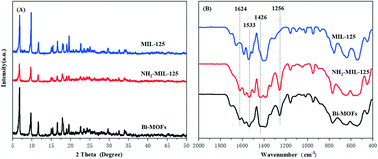
Catal. Sci. Technol., 2020,10, 1015-1022
https://doi.org/10.1039/C9CY02318F
Zn-Modified Co@N–C composites with adjusted Co particle size as catalysts for the efficient electroreduction of CO2
The Zn-Co@N–C composites are developed by direct annealing of Zn–Co ZIF materials. The size of Co particles could be adjusted by the introduced Zn species. The activity in CO2RR is gradually improved with the decrease of Co particle size.
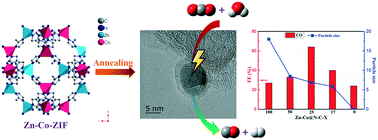
Catal. Sci. Technol., 2020,10, 967-977
https://doi.org/10.1039/C9CY02203A
Effects of different exchanging ions on the band structure and photocatalytic activity of defect pyrochlore oxide: a case study on KNbTeO6
The effects of different exchanging ions including Ag, Cu, and Sn on enhancing the photocatalytic activity of KNbTeO6 are investigated by means of experiments and calculations.

Catal. Sci. Technol., 2020,10, 978-992
https://doi.org/10.1039/C9CY01782H
Mechanistic insight into the organocalcium-mediated nucleophilic alkylation of benzene and further rational design
DFT calculations disclosed the mechanism of the target reaction and the origin of unusual nucleophilicity of organocalcium. More reactive analogues were designed.
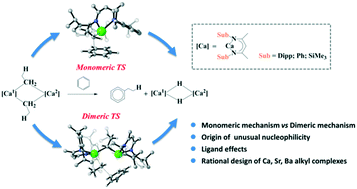
Catal. Sci. Technol., 2020,10, 950-958
https://doi.org/10.1039/C9CY02252J
Simple reversible fixation of a magnetic catalyst in a continuous flow system: ultrafast reduction of nitroarenes and subsequent reductive amination using ammonia borane
Continuous reductive amination was performed using NH3BH3 through reversible magnetic bimetallic fixation at room temperature.
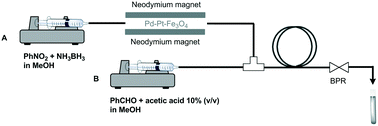
Catal. Sci. Technol., 2020,10, 944-949
https://doi.org/10.1039/C9CY02021G
Fabrication and study of the synergistic effect of Janus Ni2P/Ni5P4 embedded in N-doped carbon as efficient electrocatalysts for hydrogen evolution reaction
Ni2P/Ni5P4 with Janus nanostructure was fabricated via a controllable phosphidation approach and the interfacial effects were revealed by DFT theory.
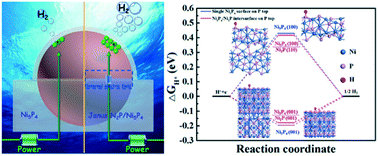
Catal. Sci. Technol., 2020,10, 1023-1029
https://doi.org/10.1039/C9CY01918A
Fatty acid epoxidation by Collariella virescens peroxygenase and heme-channel variants
A new unspecific peroxygenase (UPO) generating a variety of epoxidized derivatives of unsaturated fatty acids has been discovered and engineered by heterologous expression of a putative upo gene.
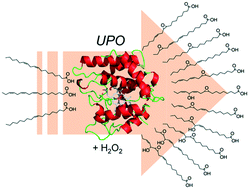
Catal. Sci. Technol., 2020,10, 717-725
https://doi.org/10.1039/C9CY02332A
Promotion effect of cerium doping on iron–titanium composite oxide catalysts for selective catalytic reduction of NOx with NH3
Doping with a suitable amount of Ce enhances the SCR performance of FeTi catalysts.
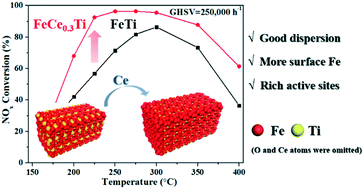
Catal. Sci. Technol., 2020,10, 648-657
https://doi.org/10.1039/C9CY02292A
Buchwald–Hartwig cross-coupling of amides (transamidation) by selective N–C(O) cleavage mediated by air- and moisture-stable [Pd(NHC)(allyl)Cl] precatalysts: catalyst evaluation and mechanism
We report a combined experimental and computational study of the Buchwald–Hartwig cross-coupling of amides by N–C(O) cleavage (transamidation) using well-defined, air- and moisture-stable [Pd(NHC)(allyl)Cl] precatalysts.
![Graphical abstract: Buchwald–Hartwig cross-coupling of amides (transamidation) by selective N–C(O) cleavage mediated by air- and moisture-stable [Pd(NHC)(allyl)Cl] precatalysts: catalyst evaluation and mechanism](/en/Image/Get?imageInfo.ImageType=GA&imageInfo.ImageIdentifier.ManuscriptID=C9CY02080B&imageInfo.ImageIdentifier.Year=2020)
Catal. Sci. Technol., 2020,10, 710-716
https://doi.org/10.1039/C9CY02080B
Heteroatom substituted zeolite FAU with ultralow Al contents for liquid-phase oxidation catalysis
Titanium-substituted FAU stabilizes aromatic alkenes to greater extents than BEA and mesoporous silica.
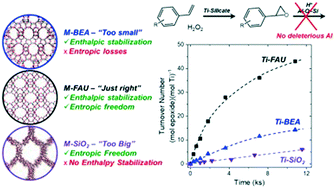
Catal. Sci. Technol., 2020,10, 635-647
https://doi.org/10.1039/C9CY01886G
Promotion effect of Mg on a post-synthesized Sn-Beta zeolite for the conversion of glucose to methyl lactate
Mg-Sn-Beta zeolites with different Mg/Sn molar ratios were prepared from the parent deAl-Beta by a coimpregnation method. It shows higher selectivity for the conversion of glucose to methyl lactate than post-synthesized Sn-Beta.
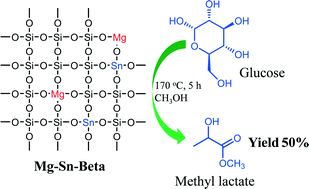
Catal. Sci. Technol., 2020,10, 700-709
https://doi.org/10.1039/C9CY02376C
A facile acid treatment for P25 modification with enhanced photocatalytic H2 evolution – effect of Brønsted acid sites and oxygen vacancies
Acid treated P25 catalysts (HP25-x, x represents the treatment temperature) were successfully fabricated via a simple soaking and drying process for photocatalytic H2 production.
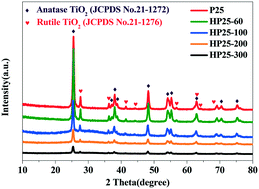
Catal. Sci. Technol., 2020,10, 690-699
https://doi.org/10.1039/C9CY02166C
How coverage influences thermodynamic and kinetic isotope effects for H2/D2 dissociative adsorption on transition metals
Hydrogen isotope effects are influenced by adsorbate coverage: at high coverages, isotope effects are lower than at low coverages. This helps to rationalize observed isotope effects, allowing more precise elucidation of reaction mechanisms.
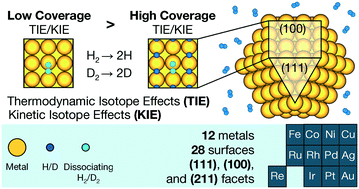
Catal. Sci. Technol., 2020,10, 671-689
https://doi.org/10.1039/C9CY02338K
Strong Lewis acidic catalysts for C–F bond activation by fluorination of activated γ-Al2O3
A strong solid Lewis acid catalyst has been successfully obtained by modifying a known procedure of fluorinating γ-aluminium oxide, which was pre-calcined under vacuum.
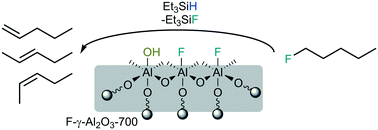
Catal. Sci. Technol., 2020,10, 391-402
https://doi.org/10.1039/C9CY01585J
Novel nickel nanoparticles stabilized by imidazolium-amidinate ligands for selective hydrogenation of alkynes
Novel magnetically recoverable nickel nanoparticles (Ni NPs) stabilized by imidazolium-amidinate ligands selectively hydrogenate alkynes into (Z)-alkenes under mild conditions.
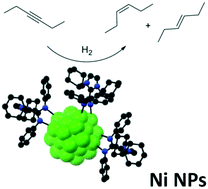
Catal. Sci. Technol., 2020,10, 342-350
https://doi.org/10.1039/C9CY02172H
Aerobic oxidative dehydrogenation of N-heterocycles over OMS-2-based nanocomposite catalysts: preparation, characterization and kinetic study
OMS-2-based nanocomposites doped with sodium phosphotungstate were prepared and their remarkably enhanced catalytic activity and recyclability in aerobic oxidative dehydrogenation of N-heterocycles were examined in detail.
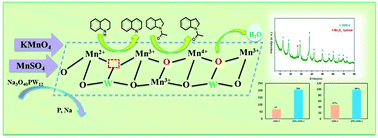
Catal. Sci. Technol., 2020,10, 360-371
https://doi.org/10.1039/C9CY01968E
Kinetic study and effect of water on methane oxidation to methanol over copper-exchanged mordenite
Kinetic experiments show that both methoxy species and carbon monoxide are primary products. Adsorption of one water molecule reversibly blocks at least two copper atoms in active species.
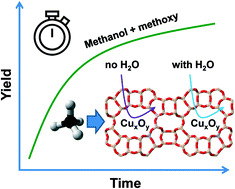
Catal. Sci. Technol., 2020,10, 382-390
https://doi.org/10.1039/C9CY01711A
Hybrid PDI/BiOCl heterojunction with enhanced interfacial charge transfer for a full-spectrum photocatalytic degradation of pollutants
The strong interaction between BiOCl and PDI preferentially formed. Owing to the strongly coupled heterojunction interface and conjugated structure of PDI, a rapid interfacial charge transfer was allowed from PDI to BiOCl across the interface.
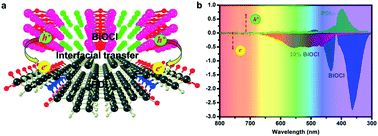
Catal. Sci. Technol., 2020,10, 372-381
https://doi.org/10.1039/C9CY01722D
The fabrication of trifunctional polyoxometalate hybrids for the cascade conversion of glycerol to lactic acid
Lactic acid (LA) has been produced with cascade reactions under non-noble metal and base-free conditions.
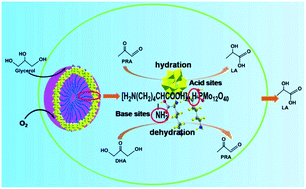
Catal. Sci. Technol., 2020,10, 207-214
https://doi.org/10.1039/C9CY01851D
Additively manufactured RANEY®-type copper catalyst for methanol synthesis
We describe a novel approach to prepare cellular methanol synthesis catalysts by combining additive manufacturing (AM) of a Cu–Al alloy followed by selective leaching of Al with aqueous NaOH solutions.
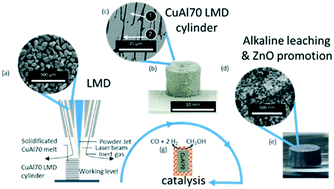
Catal. Sci. Technol., 2020,10, 164-168
https://doi.org/10.1039/C9CY01657K
Amorphous CoFe(OH)x hollow hierarchical structure: an efficient and durable electrocatalyst for oxygen evolution reaction
Amorphous CoFe(OH)x hollow hierarchical microspheres are fabricated by using a polyhedral Cu2O template. CoFe(OH)x shows excellent OER activity and long-term durability due to its unique hollow hierarchical structure and composition.
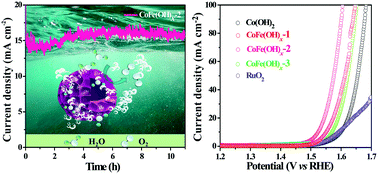
Catal. Sci. Technol., 2020,10, 215-221
https://doi.org/10.1039/C9CY02092F
Charge separation and molecule activation promoted by Pd/MIL-125-NH2 hybrid structures for selective oxidation reactions
The Pd/MIL-125-NH2 hybrid photocatalyst exhibits great advantages in charge separation and molecule activation, with sufficient generation of both superoxide radical and singlet oxygen toward selective oxidation of organic molecules.

Catal. Sci. Technol., 2020,10, 138-146
https://doi.org/10.1039/C9CY01690B
Photoelectrocatalytic oxidation of 3-pyridinemethanol to 3-pyridinemethanal and vitamin B3 by TiO2 nanotubes
In this paper, the first photoelectrocatalytic 3-pyridinemethanol oxidation to 3-pyridinemethanal and vitamin B3 was investigated.
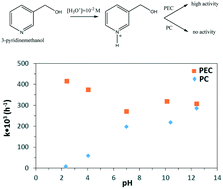
Catal. Sci. Technol., 2020,10, 124-137
https://doi.org/10.1039/C9CY01583C
Efficient asymmetric synthesis of chiral alcohols using high 2-propanol tolerance alcohol dehydrogenase SmADH2 via an environmentally friendly TBCR system
Based on substrate-coupled cofactor regeneration system, a high 2-propanol tolerance SmADH2 together with TBCR system can synthesise structurally diverse chiral alcohols at a high substrate loading with only 1.25 equivalents of 2-propanol.
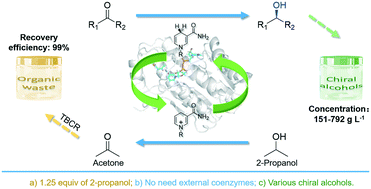
Catal. Sci. Technol., 2020,10, 70-78
https://doi.org/10.1039/C9CY01794A
About this collection
Welcome to our online rolling collection of the hottest work published in Catalysis Science & Technology. Here we feature all the 2020 Catalysis Science & Technology articles highlighted as HOT by the handling editor or our referees. Congratulations to all the authors whose articles are featured.